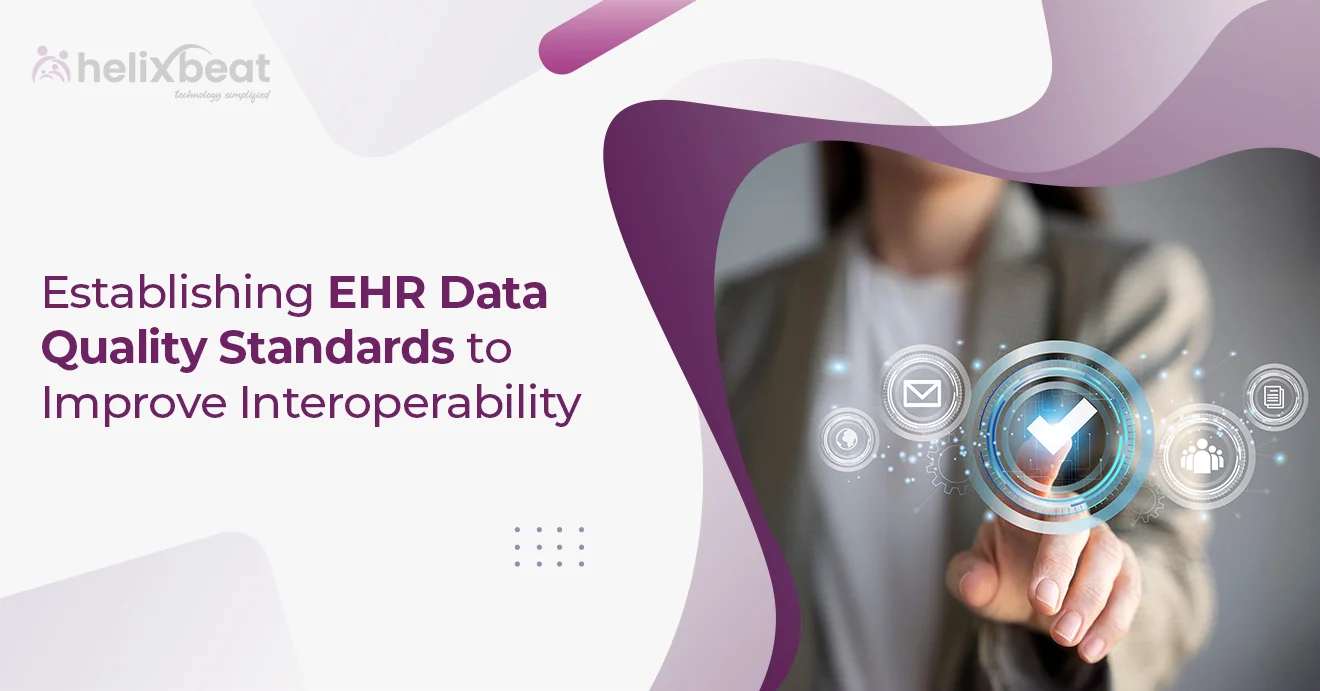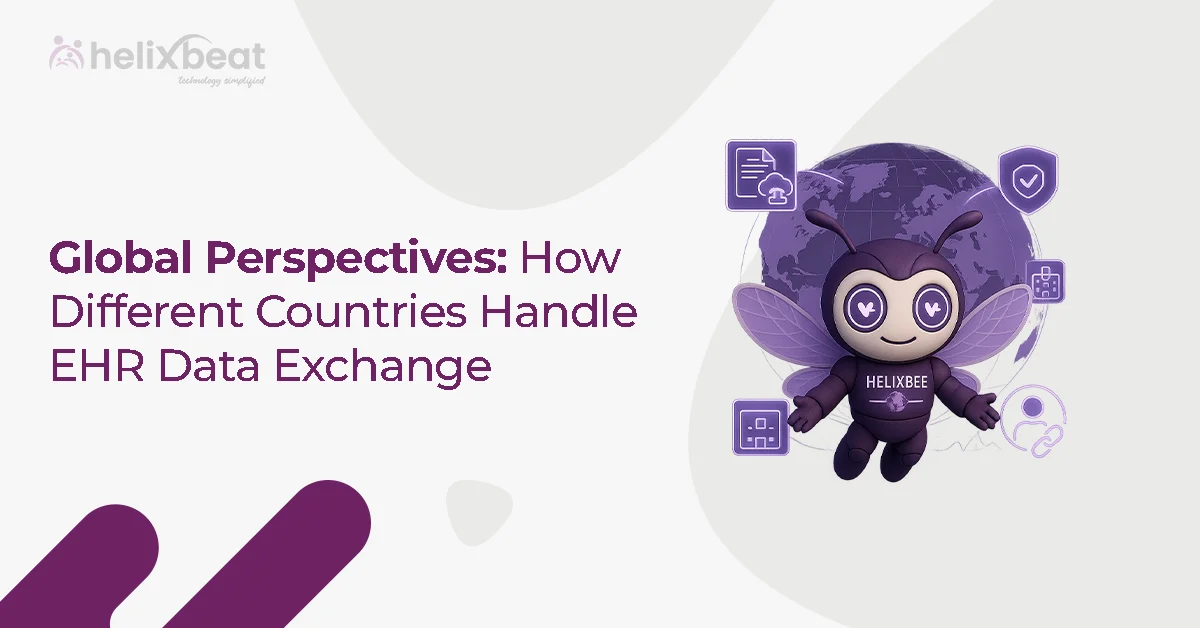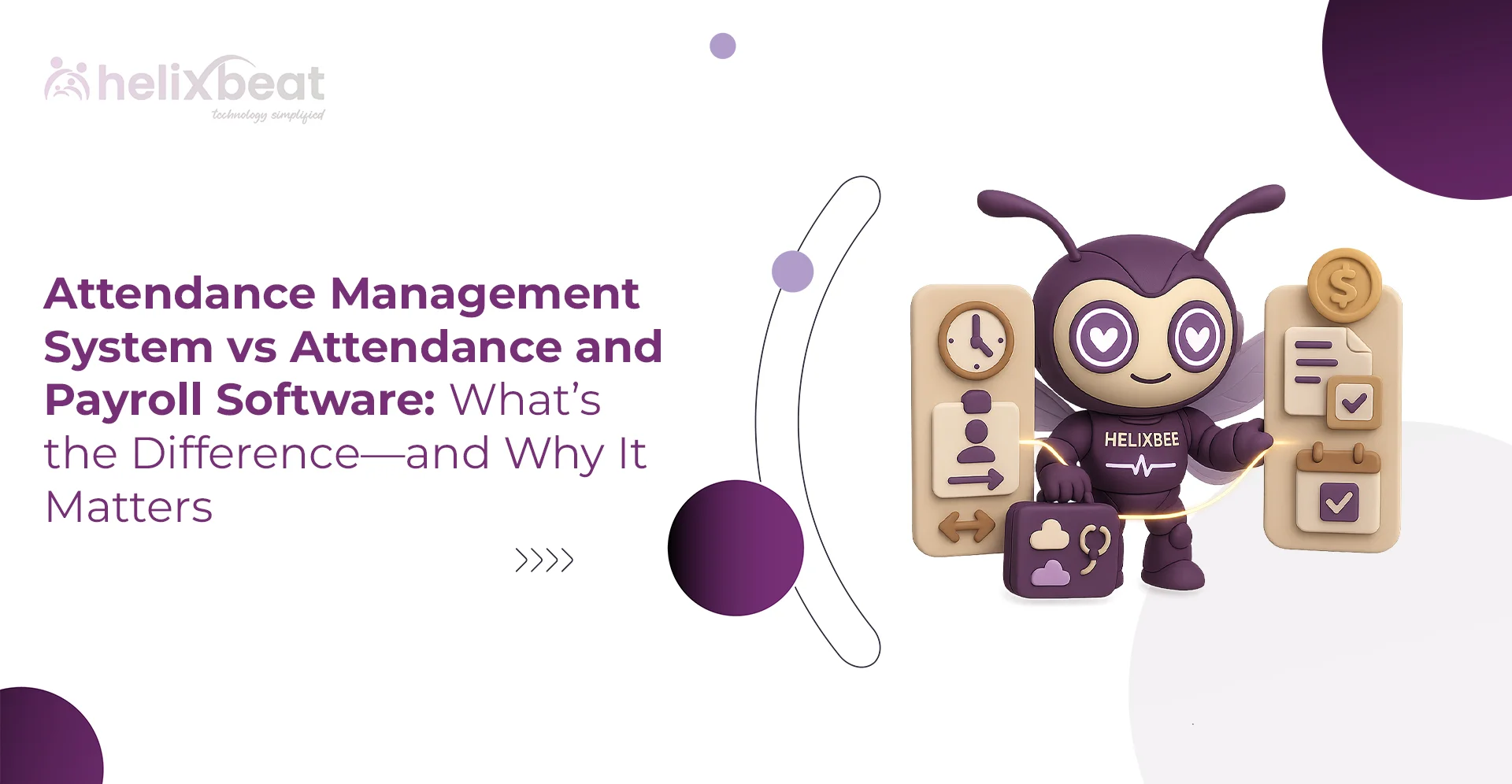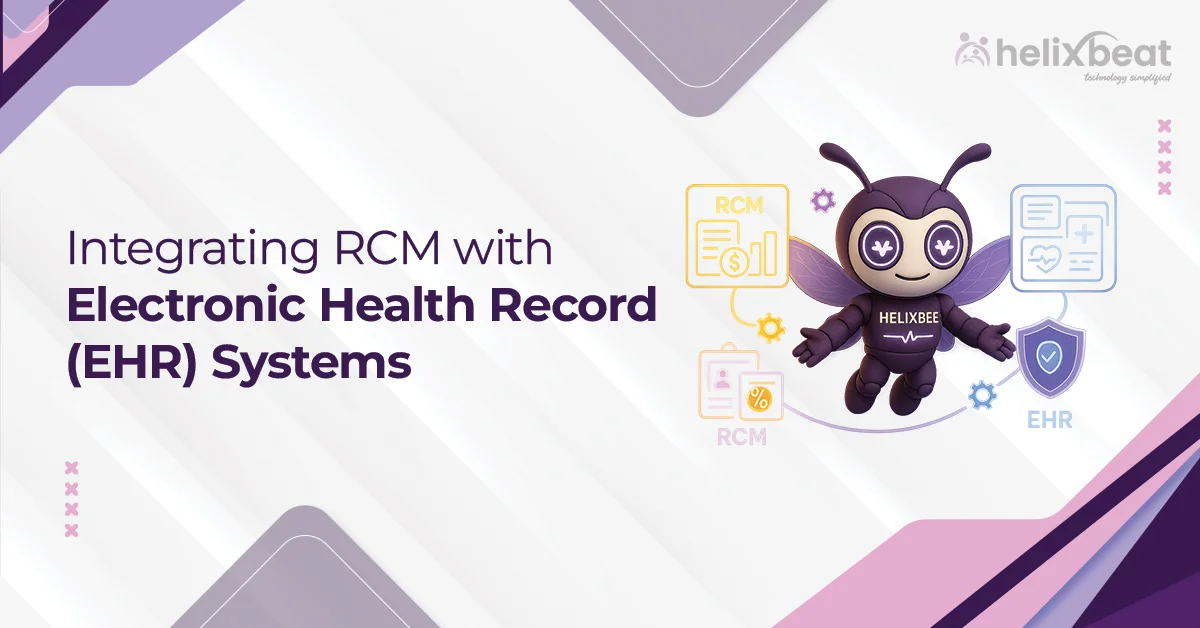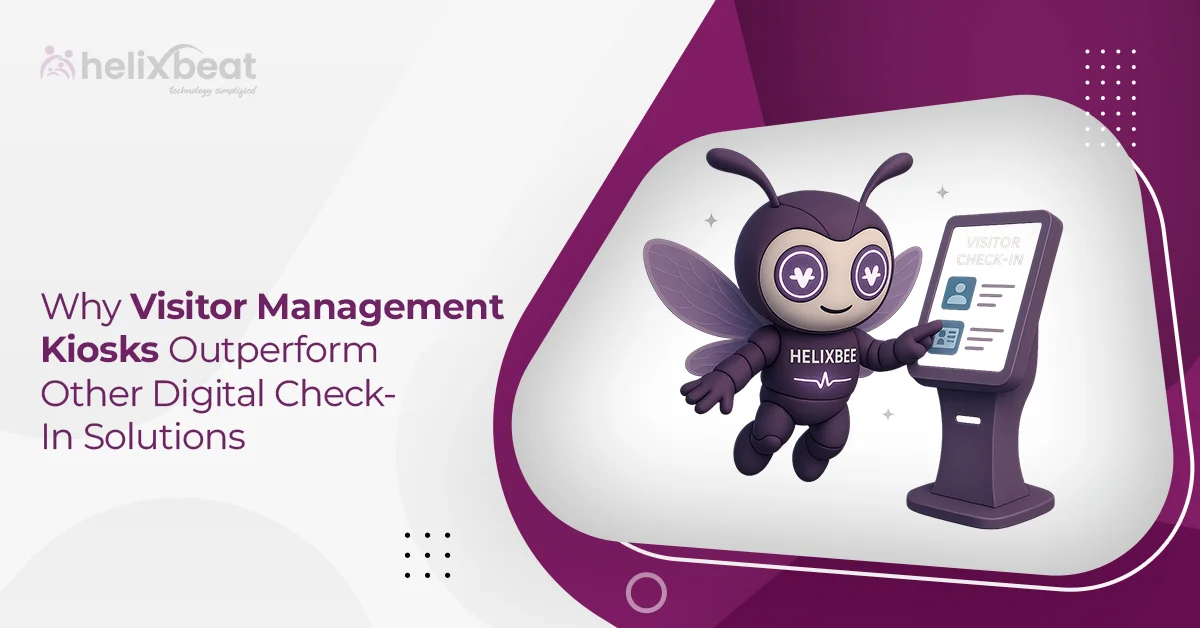The healthcare industry is undergoing rapid change, and technology is emerging as a key player in enhancing patient care and streamlining operations. In recent years, Electronic Health Records (EHR) have transformed how healthcare providers store, access, and share patient information.
However, for EHR systems to function optimally, the data must be accurate, consistent, and easily shareable. This is where EHR data quality standards come in. By setting and adhering to these standards, healthcare systems can enhance interoperability. In this blog, we will discuss how these standards help enhance interoperability and, in turn, improve patient care.
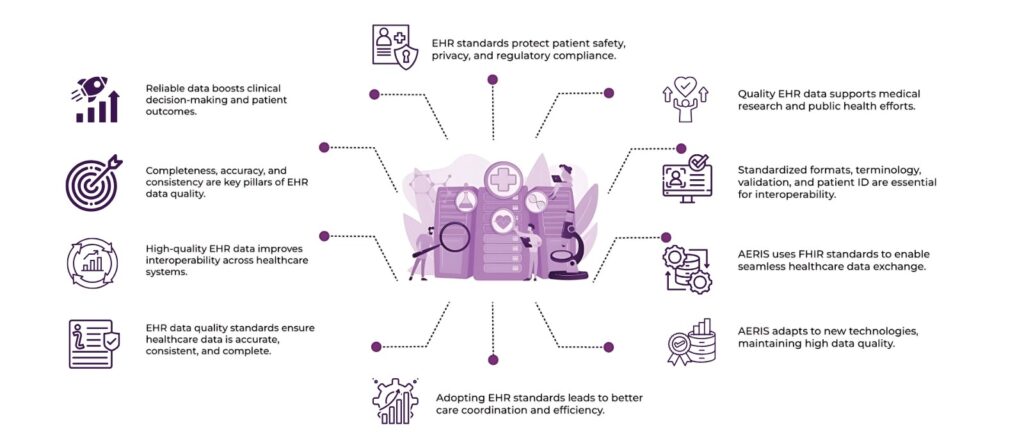
Table of Contents
What Are EHR Data Quality Standards?
EHR data quality standards are guidelines and best practices designed to ensure the accuracy, consistency, and usability of health data in electronic systems.
Here are some examples of EHR data quality standards, often categorised by different dimensions:
1. Completeness: This refers to whether all expected or necessary data is present in the EHR.
- Example: Recording a patient’s smoking status as “current smoker,” “former smoker,” or “never smoked” instead of leaving the field blank.
- Example: Verifying that all required fields in a patient’s demographic information (e.g., name, date of birth, gender, contact information) are filled.
- Example: Documenting all administered medications, including dosage, route, and frequency.
2. Accuracy: This refers to whether the data recorded in the EHR accurately represents the patient’s health information.
Example: Accurately documenting a patient’s diagnosis using standardised medical codes (e.g., ICD-10).
Example: Keeping the patient’s allergy list up-to-date and accurately reflecting their true allergies.
3. Consistency: This refers to the uniformity of data elements within and across different parts of the EHR.
- Example: Using the same units of measurement (e.g., Celsius or Fahrenheit for temperature) consistently throughout the record.
- Example: Maintaining consistent formatting for dates and times across all entries.
Because hospitals, clinics, pharmacies, and other healthcare settings rely on EHR systems, these data quality standards are crucial for ensuring smooth and reliable communication among them.
Why Do EHR Data Quality Standards Matter?
Below are some of the key reasons why EHR data quality standards matter:
1. Improving Data Sharing Across Healthcare Systems
In healthcare, it is essential for various departments and facilities to collaborate effectively. A patient may visit several healthcare providers, including family doctors, specialists, or emergency rooms. Therefore, all relevant health information must be readily accessible to each provider for optimal care.
EHR data quality standards are the foundation for this seamless data exchange. When data is accurate, complete, and standardized, it is easier for healthcare providers to make informed decisions. This, in turn, leads to more efficient care, fewer errors, and, ultimately, better patient outcomes.
2. Improving Clinical Decision-Making
Doctors, nurses, and other healthcare professionals rely heavily on patient data to make important treatment decisions. When this data in an EHR system is outdated or inaccurate, it can lead to poor decisions.
EHR data quality standards provide a framework for ensuring the reliability of data used in decision-making. These standards help ensure the accuracy and up-to-date nature of the data, providing doctors and nurses with access to the most relevant information. With reliable data, healthcare professionals can more effectively diagnose conditions, prescribe the right treatments, and track patient progress.
3. Improving Patient Safety and Privacy
Patient safety is a top priority in healthcare. However, poor data quality can put patients at risk, especially if critical details like allergies, medications, or medical history are missing or incorrect. Additionally, EHR systems must adhere to stringent privacy and security guidelines to safeguard sensitive patient information.
By establishing data quality standards, healthcare providers can improve the accuracy of records, minimise errors, and protect patient privacy. These standards also help meet regulatory requirements, such as the Health Insurance Portability and Accountability Act (HIPAA), which safeguards the storage and sharing of patient data.
4. Facilitating Research and Public Health Initiatives
The data collected through EHR systems is not only valuable for individual patient care but also for broader research and public health initiatives. Researchers and policymakers rely on accurate and comprehensive data to identify health trends, track disease outbreaks, and evaluate the effectiveness of treatments.
Establishing EHR data quality standards makes the data reliable and usable for research purposes. It supports evidence-based practices and enables healthcare organisations to contribute to advancing medical knowledge and public health.
Key Components of EHR Data Quality Standards for Interoperability
To achieve true interoperability, certain components of EHR data quality standards need to be in place. These include:
- Standardized Data Formats: Uniform data formats, like the HL7 FHIR, make it easier for systems to exchange information without confusion or errors.
- Data Mapping and Terminology: Consistent terminology and mapping codes (e.g., ICD-10 for diagnoses) make sure health data is understood the same way across different systems.
- Data Validation and Error Checking: Data validation tools help identify and correct errors in real-time and reduce the chances of incorrect data entering the system.
- Patient Identification Standards: Establishing universal patient identifiers allows healthcare providers to correctly link patient data across different systems, so that information is tied to the right individual.
- Data Security and Access Controls: EHR data quality standards also include guidelines for securing patient data and granting access to sensitive information only to authorized individuals.
How AERIS Facilitates Interoperability in Healthcare with FHIR
AERIS, a real-time data exchange software, facilitates quick sharing of accurate data, which is key to improving patient care. AERIS integrates FHIR standards into its system, which makes data exchange smoother between different healthcare platforms—like EHRs, lab systems, pharmacies, and insurance systems. This standardization leads to fewer errors, misinterpretations, and gaps, thus improving the reliability of information used in patient care.
In addition, AERIS stays flexible and adaptable. Its ability to integrate new technologies and systems allows it to meet the ever-changing needs of the industry. By using FHIR, AERIS stays up-to-date with the latest data quality standards, helping healthcare providers share high-quality data as new tools and systems come into play.
Final Thoughts
The role of EHR data quality standards in enhancing interoperability is undeniable. These standards establish clear guidelines for data accuracy, consistency, and security. As a result, healthcare providers can share information seamlessly, thus improving care coordination, clinical decision-making, and patient safety.
By adopting FHIR and adhering to its data standards, healthcare organisations can unlock the full potential of their EHR systems. If you’re ready to streamline your healthcare data exchange, learn how AERIS can help your organisation standardise EHR data quality and improve interoperability today!
FAQs
1. What are EHR data quality standards?
EHR data quality standards are guidelines designed to make health data in electronic systems accurate, consistent, and usable. They cover aspects like data accuracy, consistency, security, and interoperability.
2. What is the significance of standardized data formats like HL7 FHIR?
Standardized formats, such as HL7 FHIR, allow different healthcare systems to share data efficiently and without errors, improving the flow of information across platforms.
3. How do EHR data quality standards help with data security and privacy?
These standards help healthcare organisations comply with privacy regulations like HIPAA, protecting sensitive patient data from unauthorised access and sharing.
4. How does data mapping and terminology contribute to interoperability?
By using consistent terminology and data mapping, health data is understood uniformly across various systems, which improves communication and reduces confusion.
5. What is AERIS and how does it support interoperability in healthcare?
AERIS is a real-time data exchange software that integrates FHIR standards, enabling smoother data sharing between healthcare platforms and improving the quality of care.



